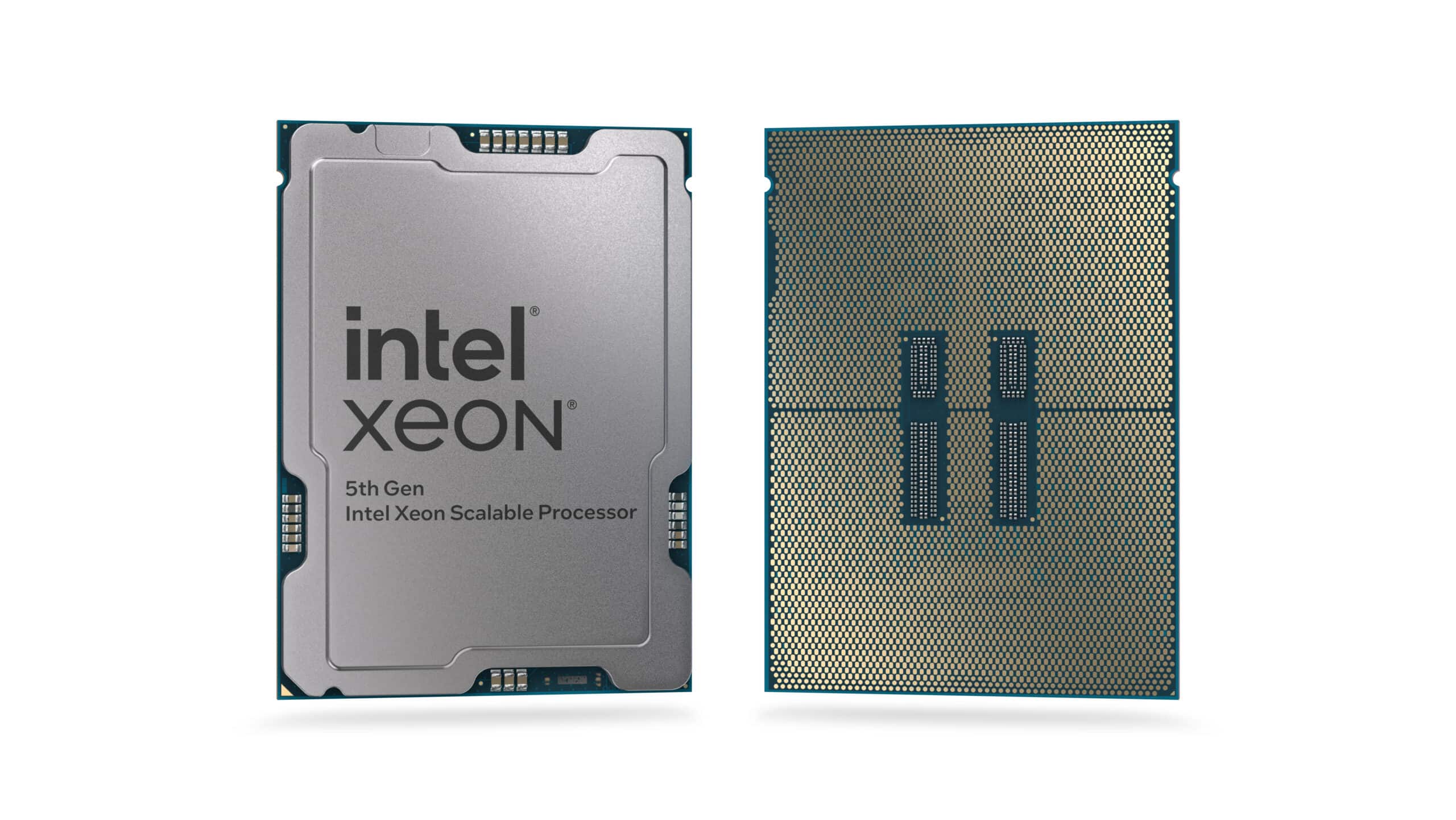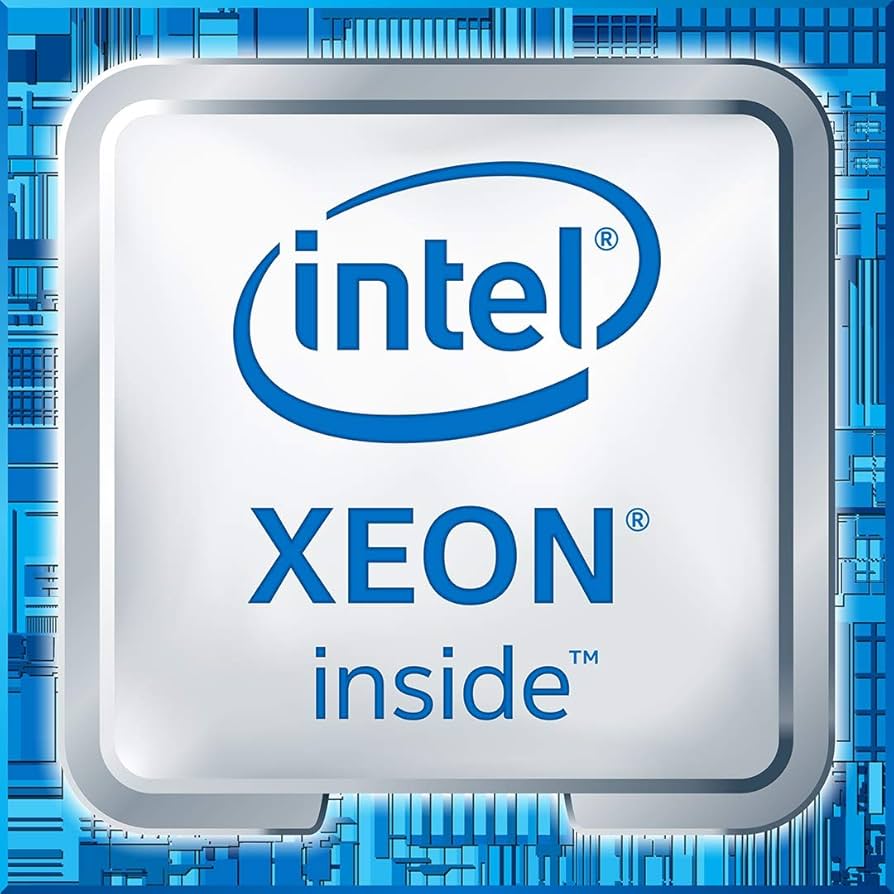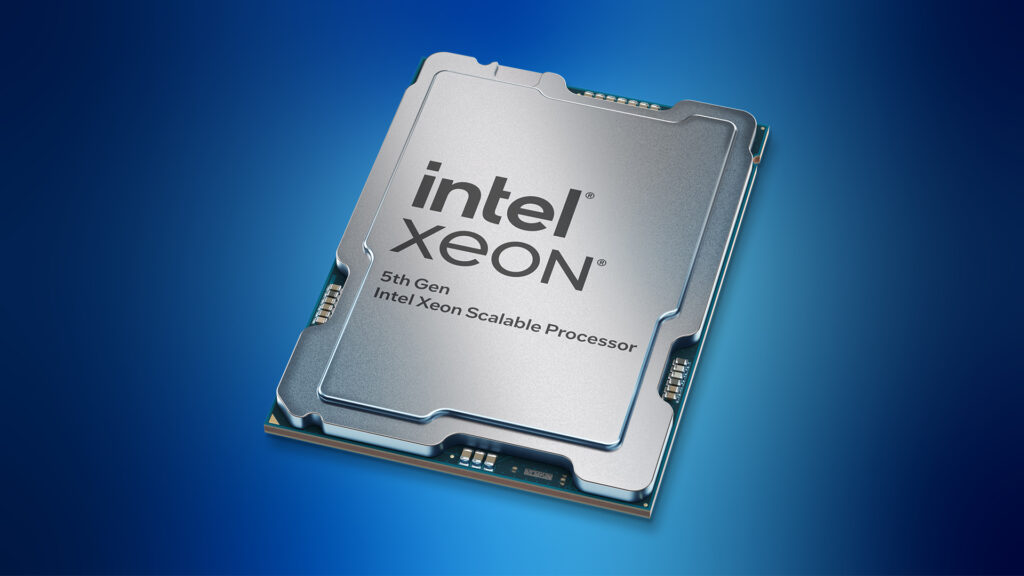April 27, 2025 – Intel has officially launched its new Intel 5th Gen Xeon CPUs, delivering major advancements for AI, high-performance computing (HPC), and data-driven workloads.
Codenamed “Emerald Rapids,” these next-generation processors offer higher core counts, faster memory, built-in AI acceleration, and enhanced security features.
Designed to meet the growing needs of modern data centers and cloud environments, the Intel 5th Gen Xeon CPUs promise significant gains in performance, energy efficiency, and scalability, helping organizations power the future of computing.
Key Features and Enhancements of Intel 5th Gen Xeon CPUs
Intel Launches 5th Gen: Xeon CPUs with several innovations to cater to modern computing demands:
Increased Core Count and Cache Size
- Up to 64 cores per CPU: Ideal for multitasking, parallel processing, and AI workloads.
- 320MB shared L3 cache: Boosts speed for complex applications such as big data analytics and deep learning.
Enhanced Memory and I/O Capabilities
- Support for DDR5 memory up to 5,600 MT/s: Quicker, more efficient data movement than DDR4.
- 8 memory channels per socket: Dramatically increases bandwidth.
- Up to 80 PCIe 5.0 lanes: Doubles the connectivity speed compared to PCIe 4.0, perfect for GPUs, SSDs, and network cards.
Built-in AI Acceleration
Each core features Intel Advanced Matrix Extensions (AMX), enabling AI training and inference without needing external GPUs — a major leap for integrated AI processing.

Performance Improvements Compared to Previous Generations
Thanks to architectural enhancements, Intel’s 5th Gen Xeon CPUs offer:
- Up to 36% improved performance per watt, reducing power costs and environmental impact
- Up to 21% better general performance
- Up to 42% higher AI inference performance, capable of supporting AI models with up to 20 billion parameters
Security and Confidential Computing in 5th Gen Xeon CPUs
Security remains a top priority as Intel launches 5th Gen: Xeon CPUs:
- Intel Trust Domain Extensions (TDX): Safeguards entire virtual machines in shared cloud environments.
- Intel Software Guard Extensions (SGX): Protects sensitive application data through secure enclaves.
These features are crucial for organizations dealing with sensitive information.
Industry Adoption and Market Availability
Leading OEMs like Dell Technologies, Hewlett Packard Enterprise (HPE), and Lenovo are integrating 5th Gen Xeon CPUs into their new server lines. Cloud giants are also expected to roll out services powered by Emerald Rapids processors during 2025.

Detailed Architecture Overview of Intel’s 5th Gen Xeon CPUs
1. Core Architecture
- Up to 64 cores per CPU
- 320MB L3 Cache: Speeds up large workloads like databases and AI models.
2. Memory Support
- DDR5 memory at 5,600 MT/s
- 8 memory channels: Greater bandwidth equals better performance.
3. PCIe 5.0 Connectivity
- 80 PCIe 5.0 lanes: Supports faster connections to GPUs, SSDs, and networks.
4. Built-in AI Acceleration
- Intel AMX technology: Allows CPUs to handle AI tasks efficiently without discrete accelerators.
5. Enhanced Security Features
- Intel TDX and SGX: Ensures secure computation even in public or hybrid cloud environments.
6. Improved Energy Efficiency
- Up to 36% better performance per watt: Enables greener, cost-effective data centers.
7. Seamless Compatibility
- Same socket as 4th Gen Xeon CPUs (Sapphire Rapids): Eases the upgrade path for enterprises.
Conclusion: Why Intel’s 5th Gen Xeon CPUs Matter
With Intel launching the 5th Gen: Xeon CPUs, data centers, cloud providers, and enterprises gain access to servers that are faster, smarter, and more secure.
This generation empowers AI, HPC, and big data applications at unprecedented scales while prioritizing sustainability and security.
As demands for computing grow, Intel’s 5th Gen Xeon CPU are poised to lead the next era of digital transformation.







More Stories
Maithili Thakur: From Folk Singing Sensation to Rising Political Star
Mysuru Dasara: The Royal Festival of Karnataka – History, Culture, and Celebration
Blood Moon Over Sydney: Unveiling the Celestial Show with Telephoto Magic